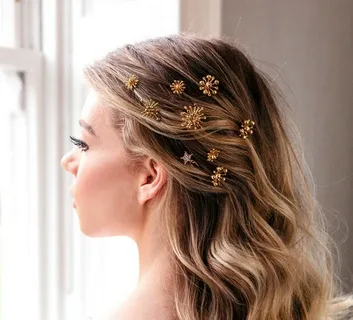Hairpieces have been a fascinating aspect of human culture for centuries, reflecting changes in fashion, social status, and technology. Understanding the history and evolution of hairpieces through the ages reveals much about how societies have viewed beauty, identity, and practicality.
Early Beginnings: Ancient Civilizations and Hair Adornments
The use of hairpieces can be traced back to ancient civilizations such as Egypt, Mesopotamia, and China. In ancient Egypt, wigs were worn not only for aesthetic purposes but also for protection from the sun. Pharaohs and nobles often adorned themselves with elaborate hairpieces made from human hair, wool, or plant fibers, symbolizing status and power.
Similarly, in ancient China, hairpieces played a role in cultural rituals and social hierarchy. These early hairpieces laid the groundwork for future innovations and styles seen throughout history.
The Influence of European Fashion: From the Renaissance to the 18th Century
As Europe moved through the Renaissance and into the 18th century, hairpieces gained prominence in the form of wigs and elaborate hair accessories. The aristocracy embraced powdered wigs during the 17th and 18th centuries, especially in France and England. These wigs were symbols of wealth and authority, often designed to be large and intricate.
This period marks a significant chapter in the history and evolution of hairpieces through the ages, as technological advancements allowed for more sophisticated wig-making techniques and materials. The styles reflected not only fashion but also political and social status.
Modern Advances: The 19th and 20th Centuries
The 19th century saw a decline in the popularity of large wigs but introduced new types of hairpieces, such as hair extensions and toupees, primarily for practical uses and cosmetic enhancement. The 20th century brought revolutionary changes with synthetic fibers and advanced manufacturing, making hairpieces more accessible and realistic.
During this time, hairpieces evolved from being exclusive to the elite to becoming a common cosmetic solution for hair loss and style versatility, reflecting broader social acceptance and technological progress.
Contemporary Trends and Innovations
Today, the history and evolution of hairpiece through the ages continues as hairpieces become increasingly natural-looking and customizable. Modern materials, such as lace fronts and 3D printing, have transformed the market. Hairpieces are now popular not only for fashion but also for medical reasons, supporting individuals with hair loss due to illness or treatment.
The ongoing innovation ensures hairpieces remain a vital part of personal expression and cultural identity, honoring a rich legacy that spans thousands of years.


